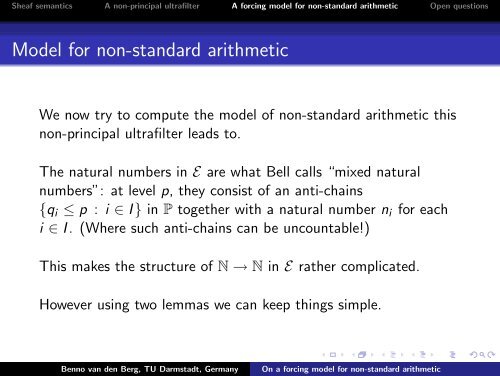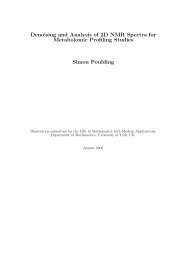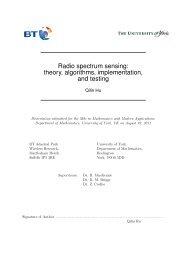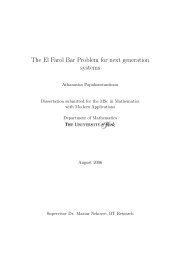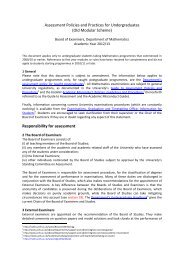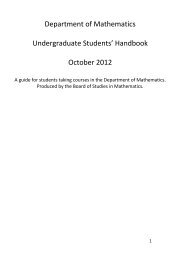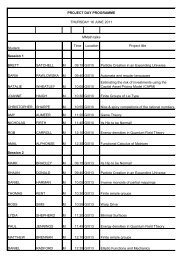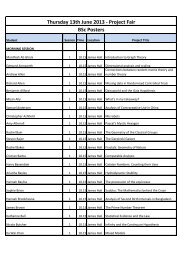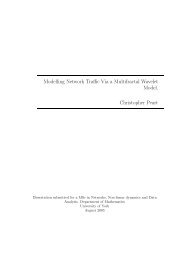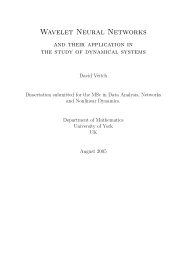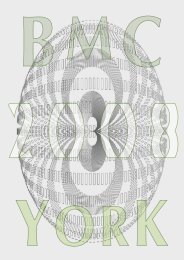On a forcing model for non-standard arithmetic
On a forcing model for non-standard arithmetic
On a forcing model for non-standard arithmetic
Create successful ePaper yourself
Turn your PDF publications into a flip-book with our unique Google optimized e-Paper software.
Sheaf semantics A <strong>non</strong>-principal ultrafilter A <strong><strong>for</strong>cing</strong> <strong>model</strong> <strong>for</strong> <strong>non</strong>-<strong>standard</strong> <strong>arithmetic</strong> Open questions<br />
Model <strong>for</strong> <strong>non</strong>-<strong>standard</strong> <strong>arithmetic</strong><br />
We now try to compute the <strong>model</strong> of <strong>non</strong>-<strong>standard</strong> <strong>arithmetic</strong> this<br />
<strong>non</strong>-principal ultrafilter leads to.<br />
The natural numbers in E are what Bell calls “mixed natural<br />
numbers”: at level p, they consist of an anti-chains<br />
{qi ≤ p : i ∈ I } in P together with a natural number ni <strong>for</strong> each<br />
i ∈ I . (Where such anti-chains can be uncountable!)<br />
This makes the structure of N → N in E rather complicated.<br />
However using two lemmas we can keep things simple.<br />
Benno van den Berg, TU Darmstadt, Germany <strong>On</strong> a <strong><strong>for</strong>cing</strong> <strong>model</strong> <strong>for</strong> <strong>non</strong>-<strong>standard</strong> <strong>arithmetic</strong>


